A collection of authentic Singaporean Recipes curated by someone born and bred in Singapore (me!) as well as tips and tricks on how to recreate hawker food at home. For travellers to the region, I've also included a recommendation of my favorite place to eat these dishes!

Jump to:
Singapore, also known as the Lion City, is known for its vibrant multiculturalism, and delectable food.
Its diverse ethnic heritage is reflected in its street food, or hawker food as it is called locally. Singaporean cuisine is a flavorful mix of traditional and modern fusion dishes, from various ethnic groups (Chinese, Indian, Malay and Peranakan.)
This rich melting pot of flavors and cultures has given birth to many unique and mouth-watering dishes that are popular both in Singapore and around the world, such as Fish Head Curry and Nyonya food.
Here is a list of the best authentic Singaporean dishes that capture the essence of the nation's diverse culinary landscape, followed by an introduction to key Singaporean ingredients and cooking techniques.
Fun fact: Street food is so good that, in Singapore, a hawker centre is where you can find a billionaire sitting next to an Average Joe!
Noodles
Note: Singapore Noodles is not a real Singaporean recipe! (I do have a recipe for it, if that's what you're looking for. Just click on the link!) I believe it's either a British or Hong Kong invention!
Mee Siam

Everyone knows laksa, so I'm going to start with something less well-known today: Mee Siam!
The origin of Mee Siam is unknown but it tastes like a delicious combination of Malay, Chinese, and Thai cuisines. The soup is a harmonious blend of sweet, sour, and spicy flavors: sour from the tamarind, spicy from the chili, umami from the fermented bean paste, savory from the dried shrimp paste and sweet from the sugar!
It's usually served with a medley of ingredients such as tofu puffs, prawns, bean sprouts, then garnished with fresh calamansi lime. However, don't stress about the ingredients- the crux of a good Mee Siam is the gravy!
Where to Eat: I like the Mee Siam at Restaurant PeraMakan @ Owen Road.

Mee Siam Goreng

Using the same ingredients as the above, but stir-fried instead of with gravy.
Where to Eat: The soup version is more readily available at hawker centres whilst this stir-fried one is usually found in small eateries and cafes. (It's more common in Malaysia, actually.)

Economic Noodles

Where to Eat: You can find this everywhere in Singapore!

Bak Chor Mee
There is always a bit of a battle between the Southeast Asian countries over which country a dish belongs to. The battle is especially intense between Singapore and Malaysia, but many people agree that Bak Chor Mee is an unequivocally Singapore food.
Note: there are both soup and dry versions of this dish. The dry version, which comes with soup on the side, is more common but both are delicious!
Where to Eat: we even have a hawker stall selling this dish that got a Michelin award! You can also enjoy this bowl of noodles in air-conditioned comfort at 5-star hotels such as Shang-ri La. However, my very favorite plate for a good soupy Bak Chor Mee is Feng Shan Hawker Centre in Bedok!
Hokkkien Mee
This is 1 of the most popular dishes in Singapore and I love it so much, I even dreamt about it in the UK!
The key to making a great Hokkien Mee is a good prawn stock, cooking with pork lard and, again, mastery of the wok!
Where to Eat: The Hokkien Mee at Prawnography, Novena Gardens, is full of the smoky wok hei flavor. (The drinks have bad reviews though, so you may want to skip those. I only ate the noodles and didn't try the drinks.)
Laksa
Laksa is a fiery and aromatic noodle that comes with a dried prawn and coconut milk gravy. It's 1 of my favorite dishes- I ate it almost everyday growing up!
It typically comes with white rice vermicelli (so not the yellow one shown above!), prawns, fish cakes, tofu puffs, hard-boiled eggs and bean sprouts. The best versions are garnished with laksa leaves but fresh leaves can be hard to find overseas. (And the dried leaves lose their fragrance fast.)
The broth, infused with a harmonious blend of spices, is the heart and soul of this dish.
Where to Eat: You can find it at hawker stalls or pimped-up versions in hotels. (These sometimes come with expensive seafood such as scallops etc.)
However, my personal fave is Sungei Road Trishaw Laksa at Hong Lim Complex, because the broth is flavorful but not overwhelmingly rich.
Watch the video below in which I compare the laksa at the iconic Marina Bay Sands Hotel (of Crazy Rich Asians fame) to 1 from a food court!
Char Kway Teow
I'll be honest.
This is the worst Singaporean recipe to cook at home!
The key to a good Char Kway Teow, a stir-fried noodle in a sweet black sauce, is mastery of the wok and super high heat. You need a sizzling hot wok to give the noodle the "wok hei", or smoky flavor, for an authentic taste- home cooks just aren't able to get those kinds of temperatures.
The flat rice noodles are cooked in a soy-based sauce- but dark soy sauce or kicap manis, not light soy! You also find bean sprouts, Chinese sausage, and cockles in this delicious dish.
If you miss this dish enough to attempt it, here's a good Char Kueh Teow recipe for you!
Where to eat: It's very hard to find a good plate of CKT now! Where do you get yours?
Prawn Noodles
Locally known as hae mee, Singapore prawn noodles has a light but savory broth that gets its flavor from seafood. Sometimes, people also add pork ribs, as this recipe has done.
Tip: remember to collect all your prawn heads and prawn shells to make the soup!
Where to Eat: I like the dry version of this dish at Da Shi Jie Big Prawn Mee, Killiney Road (near Orchard.)
Rice
Hainanese Chicken Rice
Hainanese Chicken Rice is often touted as Singapore's national dish, and it's a must-try for every food enthusiast.
This comforting dish features succulent poached chicken- sometimes roast chicken- served with fragrant rice that was cooked in chicken broth and pandan leaves. For the best flavor, it must be served with 3 flavorful sauces— pound red chili sauce, fresh ginger paste, and dark soy sauce.
The simplicity of this dish- it's essentially chicken and rice- belies its incredible flavor, making it a perennial favorite among locals and visitors alike!
Note: click here to try a congee version of Singapore Chicken Rice that I invented!
Where to Eat: the Chicken Rice at Mandarin Hotel Orchard is fantastic. Having said that, I've not been there since it re-branded to Hilton Singapore so I'm not sure if the quality has stayed the same!
Nasi Lemak
Remember what I said about the rivalry in Southeast Asia? I can already imagine the angry comments by Malaysians because I put Nasi Lemak on a list of Singaporean recipes!
Either way, this creamy coconut milk rice is a very common breakfast in both countries. It comes with fried ikan bilis (anchovies), delicious sambal, fried egg, fried chicken and more!
Where to Eat: Even the Sultan of Brunei is said to get his Nasi Lemak from the Adam Road Food Centre!
Meat
Soy Sauce Braised Pork

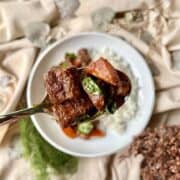
Locally known as tau yew bak, this classic Singapore Chinese home cooking recipe is not something you'll find in hawker centres or a food court, but it's 1 of the most common Singapore Chinese recipes!
Where to Eat: at a local friend's home!
Satay
Satay is a popular Singaporean dish, originating from Malay and Indonesian cuisine. It's somewhat similar to a kebab.
Its basically skewered and grilled marinated meat, usually chicken, beef, or lamb. (Some Chinese vendors also sell a pork satay, but that is quite hard to find.)
Satay is served with raw cucumbers, raw onions, rice cakes and a spicy peanut sauce on the side. It is often enjoyed as a snack, appetizer or side dish. Besides its rich flavor, satay has a succulent texture and smoky aroma from the charcoal grilling process.
Where to Eat: This common street food can be found in Singapore's hawker centres and even 5-star hotels! (See below.) I like the one at Shang Ri-La Lobby Lounge!
Chicken Curry
Singapore Chicken Curry is another home cooked local fave.
At its most basic, it's chicken and potatoes in a curry sauce. However, I like to add carrots as well to make it sweeter and healthier!
Note: for authentic flavor, use coconut milk/ cream and not yogurt!
Bak Kut Teh
This is a deliciously peppery pork and garlic soup, that is delicious with just a bowl of white rice! Serve with Chinese You Tiao on top and some dark soy sauce and red chilies for maximum flavor!
Note: there is also a herbal and black version of this dish.
Where to Eat: Ya Hua Bak Kut Teh! (Zion Road, or Tanjong Pagar.)
Seafood
Chili Crab
Singapore's other national dish is the iconic Chili Crab.
This beloved dish features a whole crab cooked in a tantalizing blend of chili sauce, tomato paste, and egg. The marriage of sweet, spicy, and tangy flavors creates a cacophony of flavor.
Goes perfectly with mantou buns, which are ideal for mopping up the delicious red sauce. (Mantou originally came from China, but Singapore has made them their own by creating a pandan flavor!)

Fish Head Curry
Fish Head Curry (鱼头咖喱) is a classic Singaporean dish that showcases the cultural fusion of the country's cuisine.
An Indian chef from Kerala, M.J. Gomez, noticed that his Chinese customers loved fish heads. Hence, he combined Indian curry with fish head, and thus this famous dish was born!
This dish uses Indian spices in a flavorful curry, and it is usually served with rice or bread. The fish head is the star of this dish, typically a large red snapper or grouper head. This dish is 1 of the more expensive local dishes, and is found more at local restaurants than hawker centres.
Note: if fish head is too cumbersome for you, you can make this Assam Fish Curry instead!

Sambal Sotong
Sambal Sotong is a spicy and savory Singaporean dish made from squid, locally known as sotong. The squid is cut into rings, like we see in calamari, then cooked in a spicy sambal sauce.
Unlike Sambal Oelek, this is a cooked sambal made from a blend of chilies, shallots, garlic, and other spices, giving it a vibrant and bold taste. Sambal Sotong is often served with rice, and can be found at seafood stalls in hawker centres.
Where to Eat: Newton Hawker Centre, which has a somewhat undeserved reputation as a tourist trap, has some good seafood stalls.
Others
Roti Prata
Imagine biting into a crispy and flaky flatbread that melts in your mouth, revealing layers of delectable buttery goodness.
Welcome to the world of Singapore Roti Prata, also known as Roti Canai in Malaysia. This dough-based delight is skillfully stretched, flipped, and cooked on a hot griddle till perfection. It comes both plain or stuffed with savory fillings such as egg and cheese.
Served with a bowl of sugar or mutton curry on the side, every bite of this Indian-inspired flatbread is a treat for your taste buds. It is a popular breakfast, snack, or late-night indulgence in Singapore.
Where to Eat: Try 1 of the 24-hour Roti Prata eateries in Singapore and have this for supper at 3am, Singapore-style!
Chinese Carrot Cake
Unlike Western carrot cake, Singapore carrot cake is savory, not sweet!
It comes in a white and black version, or you can ask to have a mix of the 2. (The black version is sweeter.) This is my Mom's fave local dish so we actually make this at home every week! I will have to post my recipe 1 day.
Where to Eat: Heng carrot cake at Newton is amazing. Long queues, unfortunately.
Rojak
Chinese Rojak is a delightful fruit and vegetable salad that epitomizes the cultural diversity of Singapore. The name literally means "mixture."
Unlike the usual salad, this is a rich dish full of umami. This unique dish combines contrasting flavors and textures, with ingredients like refreshing cucumber, crispy Chinese dough fritters, fresh fruit, crunchy vegetables, and a generous drizzle of sweet and salty rojak peanut sauce.
I love this dish but, sad to say, none of the foreign friends I've brought to try it like it... so be warned that it may not be to your taste!
Note: there is also an Indian rojak, which is a mix of fried items.
Where to Eat: Balestier Road Hoover Rojak is pretty good!
Snacks
Salted Egg Cornflakes
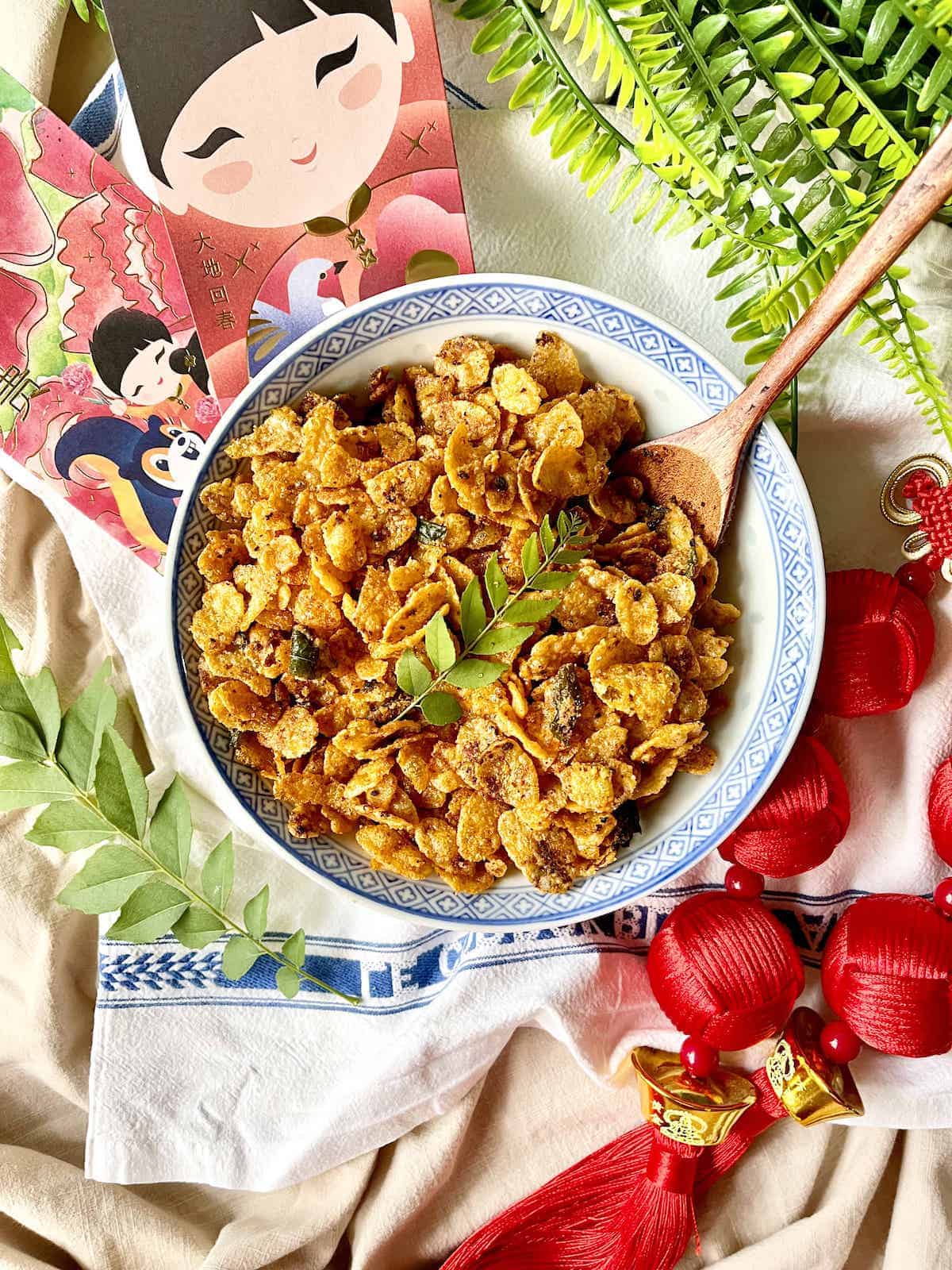
Singaporeans love salted egg anything. We have salted egg popcorn, salted egg tofu, salted egg fish skin, salted egg cornflakes... You get the idea!

Bak Kwa

In Singapore, each ethnic group has left its own mark on the local cuisine and Bak Kwa is 1 of the recipes that was brought over by Chinese immigrants.
These days, it's so associated with the country that many China tourists bring it back as a Singaporean souvenir!

Chwee Kueh
Chwee Kueh literally means Water Cake. It's a steamed rice cake topped with savory preserved radish and sometimes chili.
Where to Eat: Jian Bo at Tiong Bahru is famous for their Chwee Kueh.
Curry Puff

Tip: for an easier life you can use puff pastry instead of making the dough for the wrapper!
If you need tips on folding curry puffs, watch this video!
Where to Eat: the curry puffs at the basement of Takashimaya Shopping Centre are excellent!
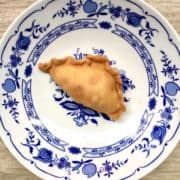
Kaya
This is like a coconut curd. Coconut, eggs and pandan leaves are heated slowly for a long time to make traditional kaya!
Note: Kaya toast is a common breakfast in Singapore, along with soft-boiled eggs.
Drinks & Desserts
For the best Singaporean desserts, with recipes, click here.
Milo Dinosaur

This is a luxuriously sweet and creamy drink that's actually very simple to make. You can watch how to make Milo Dinosaur here!
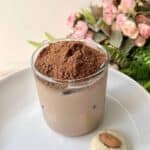
Ginger Lemongrass Tea


Jelly

Singaporean weather is nefariously hot, so jelly is a very popular dessert here. It's cool and refreshing- perfect for the perpetual summer! Besides coconut jelly, we also have sea coconut jelly, lychee jelly and konnyaku jelly!
Jelly is so easy to make, it's pretty much a 1-step recipe, as shown below:
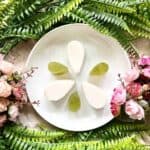
Kueh Dadar

Pandan grows abundantly in the region, so it's a common flavor found in Singaporean dessert recipes. Besides Pandan Kueh, we also have Pandan Jelly and even savory recipes, such as Pandan Rice and Pandan Bread.
Where to Eat: Bengawan Solo, of course!

Now that we've covered the best authentic Singaporean recipes, here is a list of what you'll need to stock a Singaporean pantry!
Key Ingredients in Singaporean Recipes
Here are some essential ingredients that take center stage in Singaporean dishes:
- Seafood: As Singapore is an island, seafood plays a crucial role in many Singaporean recipes, such as chilli crab and Hainanese prawn noodles. King prawns, fish, shellfish and dried seafood are often used to impart rich flavor.
- Prawn Shells: Waste not, want not. Singaporeans like to save prawn shells to make seafood stock. The shells are simmered with a mixture of spices, and sometimes pork bones to create a rich and aromatic broth. It gives dishes a delicious depth of flavor! (For example, in Hokkien Mee and Prawn Noodle Soup.)
- Sambal: Sambal is a spicy cooked chili paste made from a blend of red chillies, dried shrimp paste (belacan), and other ingredients. (Every chef has his or her own version. Some add kaffir lime leaves, others lemongrass, and yet others dried shrimp etc.) It adds a spicy kick to many dishes and is a staple of the local food.
- Shrimp Paste (Belacan): Belacan is a fermented shrimp paste used in many Singaporean and South East Asian recipes. It has a pungent smell but once toasted, adds an incredible depth of flavor.
- Pork Bones: Chinese people love pork and there is a large Chinese population in Singapore. Minced meat is used in many noodle dishes and soups, to create a flavorful base. (Substitute with chicken if halal.) Similarly, pork bones are used to create a rich, flavorful broth used in many Singaporean recipes. They are simmered with other ingredients such as prawn shells and aromatics to create a comforting, deeply flavored stock.
- Pandan Leaves: Pandan leaves are a distinctively fragrant ingredient often used in Singaporean cuisine to enhance the aroma and flavor of dishes. Traditionally, a pot could be found in almost every Singaporean garden! Pandan can be used in both sweet and savory cooking, from rice and noodle dishes to cakes and desserts.
Cooking Techniques and Tips
When preparing Singaporean dishes, you'll need to know several essential culinary techniques, such as:
- grilling: cooking food over direct heat
- stir-frying over high heat in a wok
With a little practice and patience- and the above recipes!- you will be able to create mouthwatering Singaporean meals at home. If these authentic Southeast Asian recipes and tips/ tricks were helpful, would you like to sign up for my Asian food newsletter?





Comments
No Comments